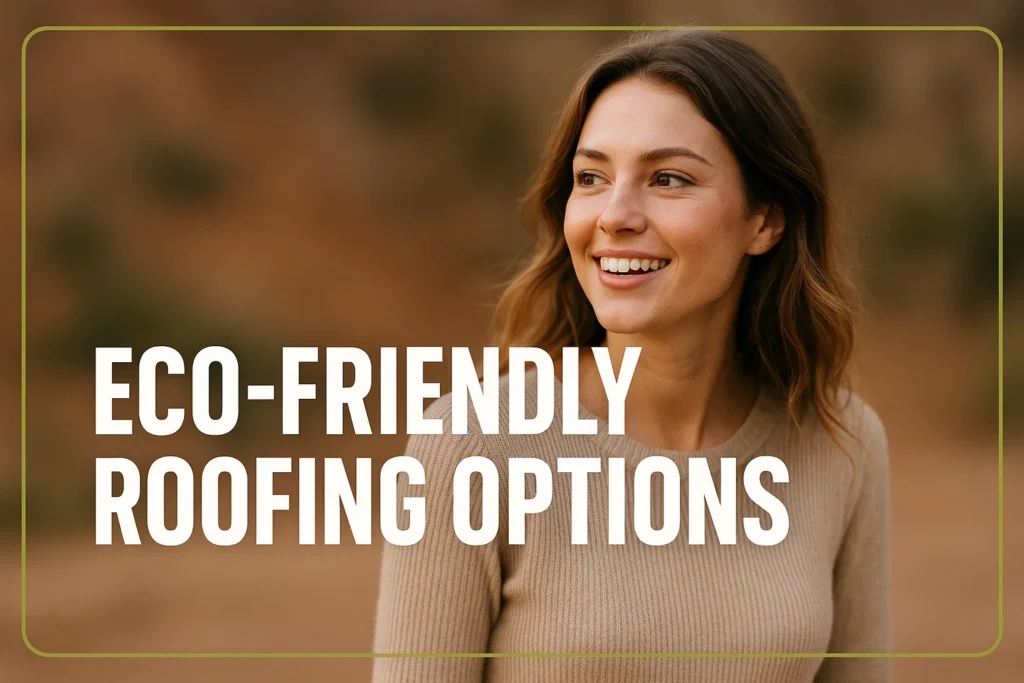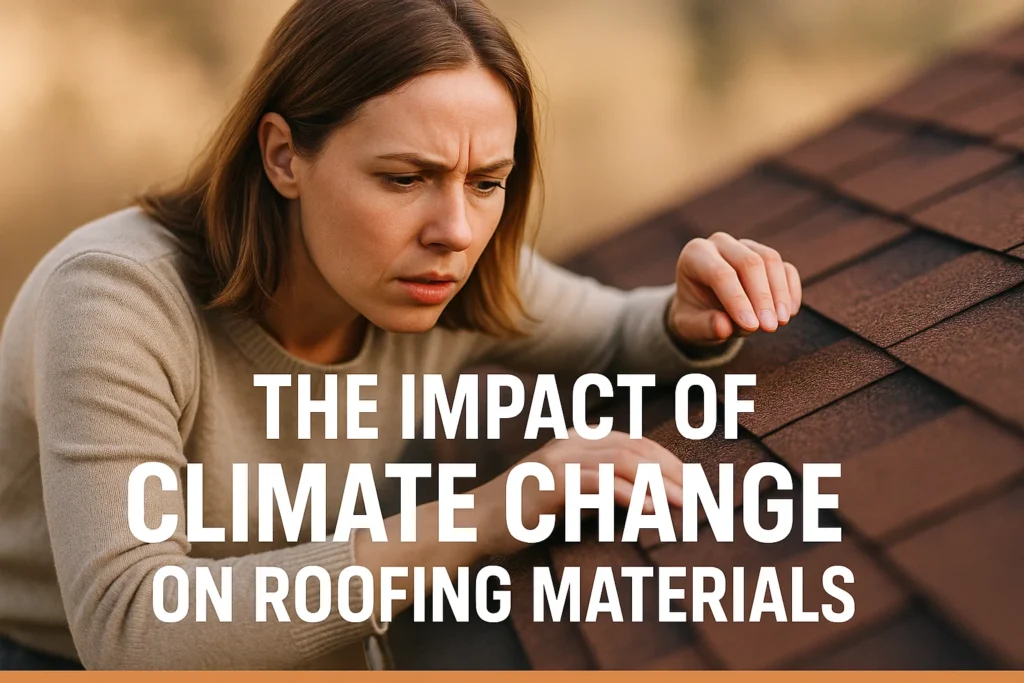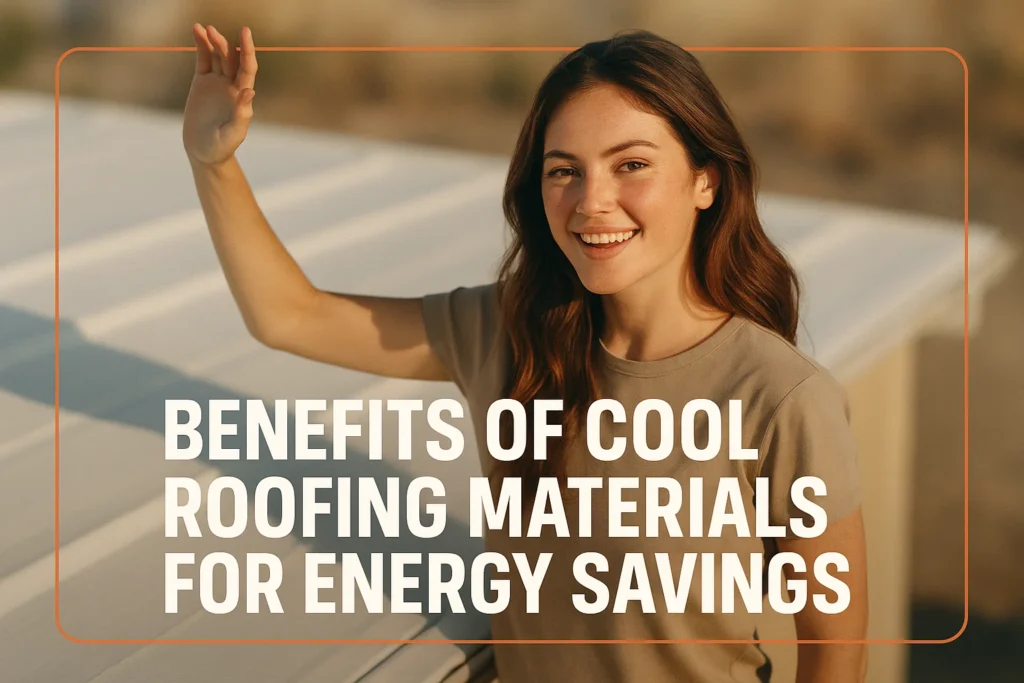With an increasingly green planet and people are seeking all kinds of alternative ways to reduce environmental impact at home. Eco-friendly roofing remains a responsible, smart choice to stand out amongst the rest. Eco-friendly roofs that protect your home, but also contribute to an environmentally friendly world with less waste, decreased energy consumption, and less greenhouse gases. In this guide, we’re going to take a look at the various eco-friendly roofing materials, what types are considered sustainable, and what to think about when you’re deciding on roofing options for your home.
What Is Eco-Friendly Roofing?
When it comes to the term eco-friendly, the first thought that comes to our mind is something related to the environment. Environmentally Friendly Roofing (sustainable roofing) refers to any roofing materials and systems that contribute to a lower impact on the environment, both during the production of the materials and the lifecycle of those materials. These include the use of recyclable/renewable materials, fire- and energy-efficient designs, waste reduction, and contributing to the long life of the roof to help reduce resources. Benefits include:
- Lower carbon footprint
- Save more energy by reducing heating/cooling loads
- Less waste, due to their longevity and recyclability
- Enhancement of the local climate and biodiversity (in particular in green roofs)
Types of Sustainable Roofing Materials
There are several different types of roofing materials available, and you should choose the one that best suits more. When it comes to choosing a type of roofing material from the are more traditional to more modern materials, both visually appealing and more environmentally friendly. But one should choose the perfect roofing system for your home’s needs.
Green Roofs
Green roofs ( those with vegetation) are on the rise simply because they are a crucial sustainable roofing trend.
Pros:
- Enhances insulation which in turn reduces heating and cooling energy consumption
- Absorbs rainwater, lowering stormwater runoff
- Protects roof membrane from UV exposure, prolonging roof life
- Categorised to improve diversity and air quality
Cons:
- Greater cost to install because of need for structural support
- Needs to be maintained (watered, weeded, fertilized)
- Not for every building without inspections
- Risk of water proofing or drainage failure due to bad design
Metal Roofs
Metal Roofs are a durable, and energy-efficient option that are becoming a stylish, modern roofing choice.
Pros:
- Extremely durable (40-70+ years lifespan)
- Reflective surfaces reduce cooling costs
- Manufactured of recycled material and 100 percent recyclable
- It is a lightweight material and can be installed over existing roofs.
Cons:
- Higher initial investment when compared to asphalt shingles
- Some noise during rain or hail without insulation
- Easy to dent and scratch if not properly coated
- May need some upkeep to maintain finish
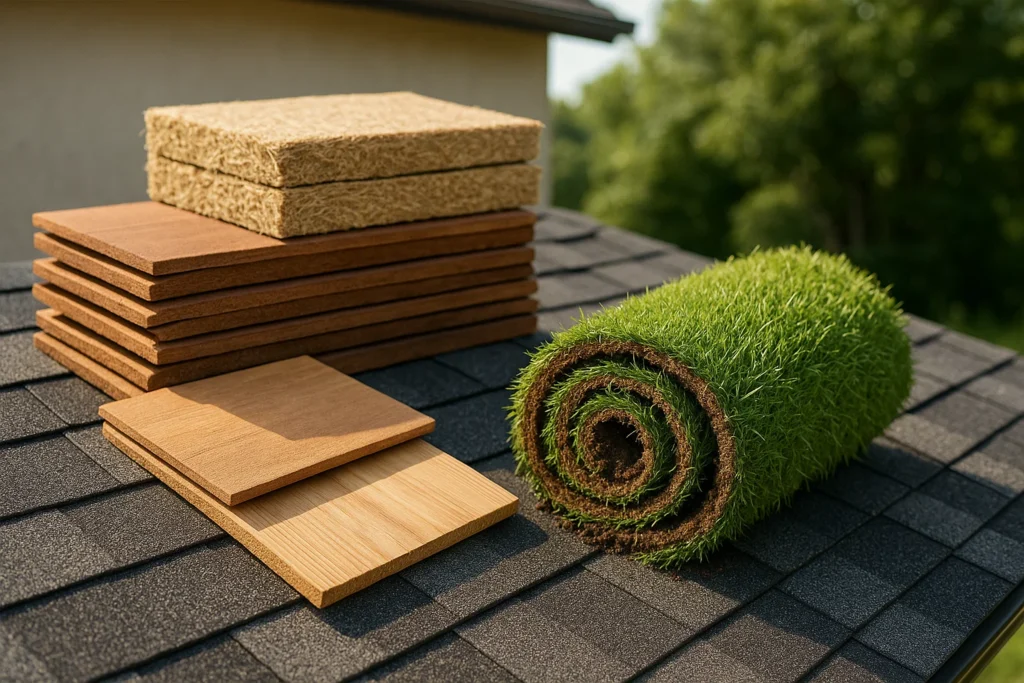
Cool Roofs
Cool Roofs employ reflective materials or coatings that reduce heat absorption, saving on energy bills and combating urban heat
Pros:
- Reflects sunshine, requiring less cooling energy
- Mitigates the urban heat island effect
- Cost-Effective, They can be applied as coatings over existing roofs
- Quick, cost-effective upgrade
Cons:
- Not as good in cold conditions when heat loss exchanges are needed
- Reflective coatings require periodic reapplication
- Some products do not last as long as regular roofs
- May increase replacement frequency
Rubber Shingles
These are eco-friendly roofs made from recycled materials (such as old rubber tires) that are pioneering a new dimension in roofing, replacing tar-based asphalt shingles once and for all.
- Recycled tires/plastic material, which avoids someone filling up landfill space.
- Lightweight, durable, and weather-resistant
- Easy to install, low maintenance
- Impact-resistant, good for storm-prone areas
Cons:
- More expensive than asphalt shingles up front
- It may not please the eye of every homeowner
- Less availability and experienced installers
- Potential longer lead times
Wood Shake
Wood shakes that are used in today’s life can be available with various kinds of certificates related to the environment or others, therefore, it is possible to find a way to use in modern day.
Pros:
- Renewable when sourced sustainably
- Natural insulation and good looks.
- The biodegradable, lower environmental impact in production
- Long-lasting when properly treated
Cons:
- You need to maintain them regularly or they will catch fire, rot, or be used for the habitat of pests.
- Less fire-resistant unless treated
- More costly and heavier than asphalt shingles
- Environmental gains rely on responsible procurement
Solar Roofs
Solar Roofs (where standard roofing materials are replaced with solar panels and/or solar shingles that are formulated to make energy) are the hottest in roof tech.
Pros:
- Produces clean, renewable power, helping to lower your electricity bills
- Reduces carbon footprint and reliance on fossil fuels
- Integrates roof and energy systems, minimising material waste
- Can increase home resale value
Cons:
- High upfront installation cost
- Requires expert planning and integration with the home electrical system
- Structural considerations due to panel weight
- Performance is affected by shading, roof angle, and location
Clay Roofing
Its interesting to note that although Clay Roofing Tiles are an ancient concept, they are still used in valued roofing projects today due to their sustainability and energy-saving thermal mass factor.
Pros:
- Natural, recyclable, and environmentally friendly
- Very durable (50+ years lifespan)
- Thermal mass regulates indoor temperatures
- Nonflammable and can be used with a variety of building types
Cons:
- HEAVY usually requires more roof reinforcement
- Brittle, will crack under impact (foot traffic)
- More costly to install and requires specialized installation
- Repairs are complex and expensive
- This style offers neatly organized pros and cons on each eco-friendly roofing material.
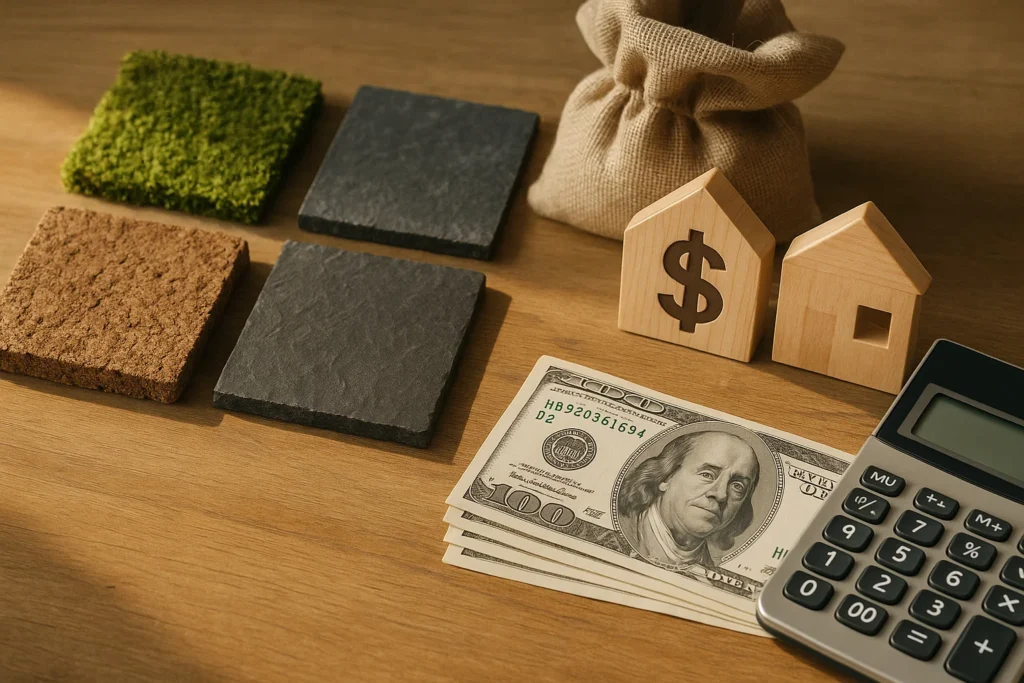
Comparison of Eco-Friendly Roofing Materials Cost
| Type | Durability | Energy Efficiency | Approximate Cost (USD per 100 sq.ft.) |
| Metal Roofing | 40-70 years | High (reflective) | $120 – $1,000 |
| Solar Tiles | 25-30 years | Very High (energy generation) | $15,000 – $40,000+ (system) |
| Green Roofs | 30-50 years | Very High (insulation) | $10 – $25 per sq.ft. |
| Rubber Shingles | 30-50 years | Moderate | $100 – $400 |
| Clay & Concrete Tiles | 50+ years | Good thermal mass | $300 – $600 |
| Cool Roofs | 5-15 years (coating) | Very High (reflective) | $0.50 – $3 per sq.ft. |
Considerations When Choosing Eco-Friendly Roofing
When selecting an eco-friendly roof, consider these points to find a sustainable option that suits your home’s needs and specific requirements.
Climate: For every type of climate, some roofing products are more efficient.
- Cool roofs work well in hot and sunny areas since they reflect the sunlight.
- On the other hand, for snowy climates, metal roofs are great as they make it easier to shed snow and resist bad weather.
Roof: Some roofs (such as slate) are heavy. Which means your home’s roof frame might have to be sturdier to bear the additional weight, which can escalate expenses.
Budget: Sometimes materials such as solar roofs or slate tiles have a higher up-front cost, because they are energy-efficient.
Style: Your roof is a large part of what your home looks like from the street. Fortunately, there are lots of eco-friendly options in a range of colors and styles.
Maintenance: Remember, some eco-friendly roofs require ongoing maintenance, such as watering and pruning. Others, like metal or synthetic roofs, generally need little maintenance.
Three things to think about when choosing your roofing material: Shingle replacement, cost, and home style. Three things that will help you select the right roofing product for you home, lifestyle and environmental consciousness: Appearance, longevity and cost of replacement.
Conclusion:
One of the most impactful positive changes you can make is to select a sustainable and green roof. Sustainable-roofing options today are available in a wide range to fit multiple climates, budgets, and aesthetics — from long-lasting metal roofs and recycled shingles to green-roof systems and solar panels. In addition to protecting your home from the elements, green roofs assist with money saving, waste reduction and a cleaner environment.
FAQ’s:
Eco-friendly roofs might have larger upfront costs, solar, slate, or green to name a few. But they offer long-term savings in terms of their energy efficiency and durability, as well as potential tax incentives.
For the best combination of lowest cost, and long life, in a green building material, metal shingles and roofs are in a class of their own.
While the average lifespan of a green roof is about 30-50 years, the layers of soil and vegetation actually protect it from any type of wear and tear.
Cool roofs are great for hot and arid climates, in which they can reflect solar heat, but may not offer the insulation assistance necessary for cold climates.
Yes, most recycled shingles are built to be as tough and resistant to weather as standard materials.


